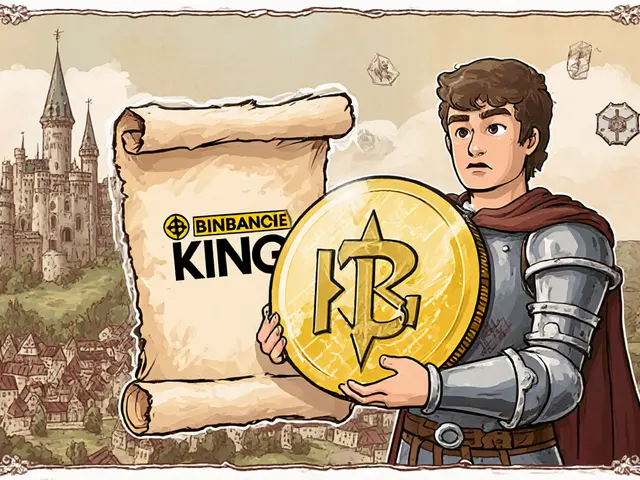Distributed Ledger Technology
When working with Distributed Ledger Technologya digital system that records transactions across multiple computers without a central authorityDLT, you’re dealing with the core tech behind Bitcoin, supply‑chain tracking, and modern finance. The most common implementation is Blockchaina chain of blocks that securely stores data, which enables Smart Contractsself‑executing code that runs on a blockchain. Those contracts power Decentralized Financefinancial services built on open protocols, and the rise of DeFi has spurred a wave of new Crypto Exchangesplatforms where users trade digital assets. In short, DLT encompasses blockchain, smart contracts, DeFi, and exchanges, creating an ecosystem where data, value, and trust flow without a single gatekeeper.
Why does this matter to you? If you’re hunting for the best exchange, the 2025 Crypto Exchange Review breaks down fees, security, and regulation for Binance, Coinbase, Kraken, Gemini, and OKX. Those platforms rely on blockchain’s immutable ledger to record every trade, and smart contracts to settle swaps instantly on networks like Ethereum and Binance Smart Chain. For developers, the Security Token Offering (STO) guide shows how tokenized securities use smart contracts to meet compliance while keeping the benefits of blockchain transparency.
Real‑World Applications Beyond Trading
DLT isn’t just for financiers. The Blockchain Land Registry article explains how governments can cut paperwork, lower fraud, and speed up title transfers by storing deeds on a public ledger. Likewise, the Cross‑Chain NFT Marketplace piece shows how multi‑blockchain support expands liquidity for creators, while the On‑Chain NFT Royalties guide details how standards like EIP‑2981 enforce creator payments automatically. Even compliance teams benefit: the Crypto Compliance Programs 2025 guide walks you through building KYC/AML frameworks that respect data privacy yet satisfy regulators, a balancing act made possible by transparent DLT records.
Every post in this collection ties back to DLT’s core promise: trustless verification. Whether you’re reading about the Tornado Cash sanctions (a reminder that privacy tools can clash with law) or the FATF greylist (showing how international policy shapes blockchain use), the underlying technology stays the same. It records every transaction, flags suspicious patterns, and provides auditors with on‑chain data to back up compliance decisions.
If you’re new to the space, start with the XRP Explained guide. It breaks down how the XRP Ledger, a type of DLT, processes payments in seconds with low fees—a practical showcase of why enterprises adopt distributed ledgers for real‑time settlement. For seasoned traders, the Swapr No‑KYC Review offers a deep dive into cross‑chain swaps that sidestep traditional onboarding, leveraging smart contracts to lock assets on one chain and release them on another.
Airdrops also illustrate DLT’s community‑driving power. Guides on BUNI, SHILL, PorkSwap, DeFiHorse, and many more walk you through eligibility checks, claim steps, and tokenomics. These campaigns rely on on‑chain snapshots—exact records of who held which token at a specific block height—ensuring fairness and transparency that would be impossible without a distributed ledger.
In the gaming arena, the CryptoBlades Kingdoms (KING) token article shows how GameFi projects embed in‑game assets as tokens on a blockchain, letting players trade items globally. The same token model appears in the Project SEED GameFi overview, where SHILL tokens fuel a play‑to‑earn economy, all secured by smart contracts on a DLT network.
All these examples prove a simple truth: Distributed Ledger Technology is the foundation that lets diverse use‑cases—finance, real estate, art, gaming, and compliance—talk to each other securely and efficiently. Below you’ll find the full set of guides, reviews, and deep dives that illustrate how DLT shapes today’s crypto landscape and where it’s heading next.





